16 Wild Animals in Oman [Wildlife in Oman]
Want to know more about wildlife in Oman?
Discover 16 wild animals in Oman in this post, as well as interesting facts about them. 🇴🇲
Learn All About Omani Animals
Ready to learn all about Omani animals?
I’ve always been fascinated by animals, and by how they can be so different from one country to another. In this guide, we’ll focus on the many animals Oman has on the land, in the sky, and underwater.
I’ve split the guide into 4 categories:
- Native animals from Oman
- Endangered animals of Oman
- What is the national animal of Oman?
- How many animals native to Oman?
Let’s dive in right away with our first category!
Native Animals from Oman
Oman, formally known as the Sultanate of Oman, is an Asian country located in the western part of the continent, on the Arabian Peninsula. It is a hidden, little-known piece of paradise with fantastic landscapes, has an economy majorly driven by tourism and fishing, and used to be a maritime empire. It is bordered by Yemen, the United Arab Emirates, and Saudi Arabia, and its capital and largest city is Muscat, which counts more than 31,000 inhabitants (but more than 1,720,000 if you include the metropolitan area!).
An interesting part of the country that I wanted to tackle is its wildlife. In light of that, I have listed the best of it, and I hope you will love learning what animals live in Oman.
Here’s the Oman animals list.
1. Humpback whale
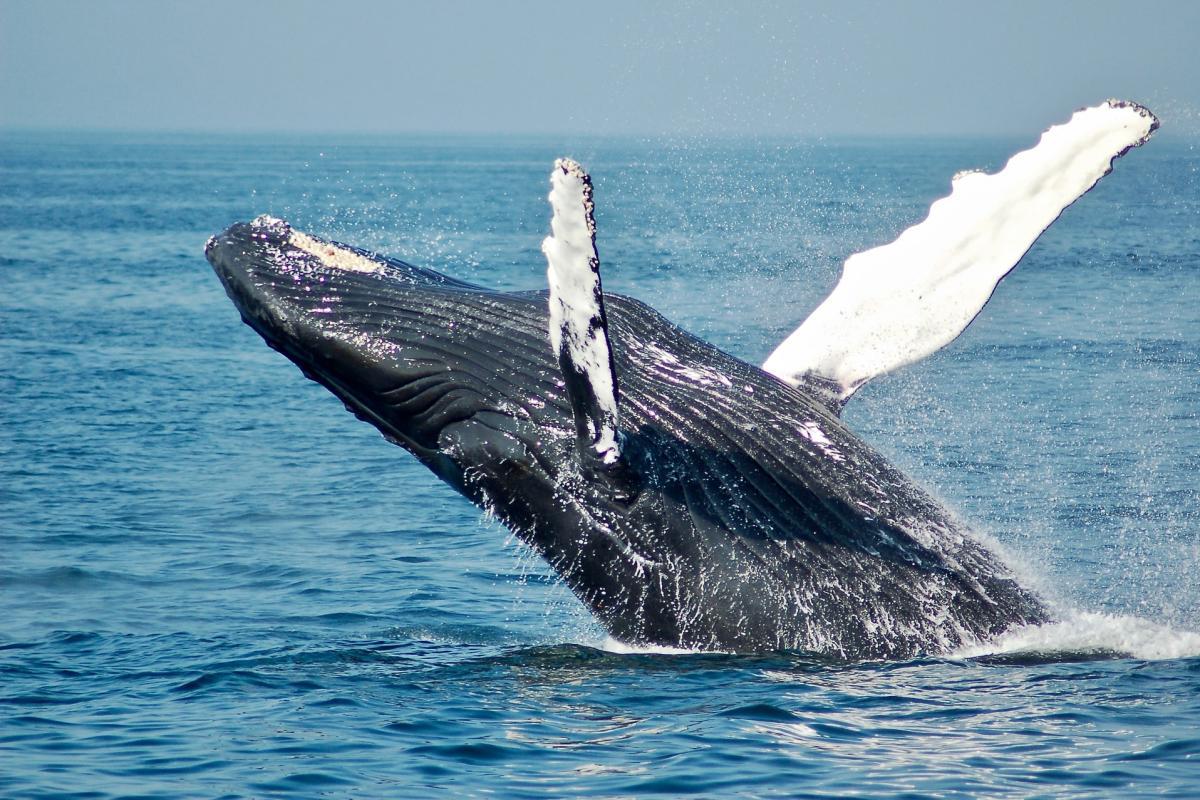
- Name: Humpback whale
- Scientific name: Megaptera novaeangliae
- Conservation status:
This list is starting off strong with one of the largest animals on the planet, the humpback whale. This rorqual can reach incredible lengths of up to 17 m / 56 ft and weights of about 40 tons / 44 short tons.
In Oman, it can be seen off the coast of the Dhofar Governorate, in the southeastern parts of the country, often breaching the surface and plunging back into the water with its back first. Because of this peculiar behavior and its strong, loud water spouts, it is the most familiar species to whale watchers.
2. Arabian oryx
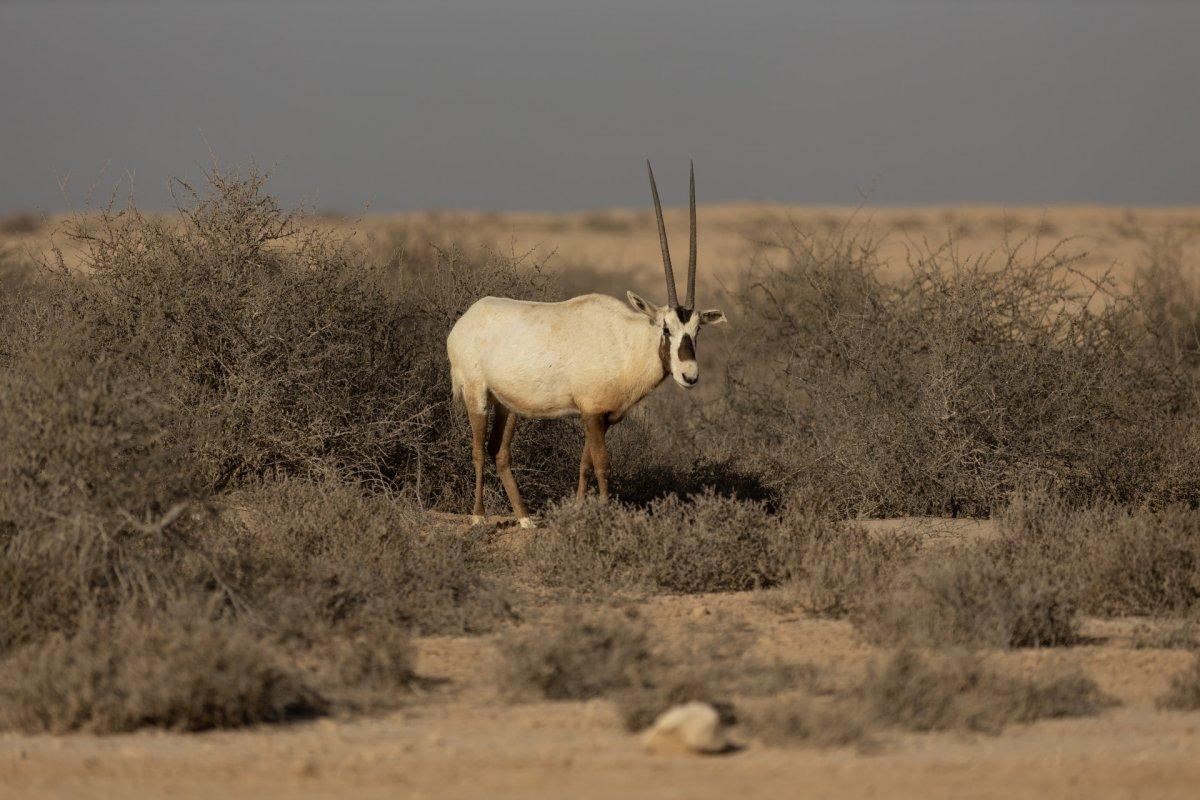
- Name: Arabian oryx
- Scientific name: Oryx leucoryx
- Conservation status:
The Arabian oryx, also known as the white oryx, is the main emblem of the Arabian Peninsula as a whole, and of Oman in particular. It is a medium-sized species of white antelope with long horns, native to the deserts of the peninsula.
Interestingly enough, this oryx is capable of detecting rainfall and moving towards it. Because of this, its home range is pretty huge and can reach more than 3,000 km² / 1,200 sq mi in Oman.
3. Nubian ibex
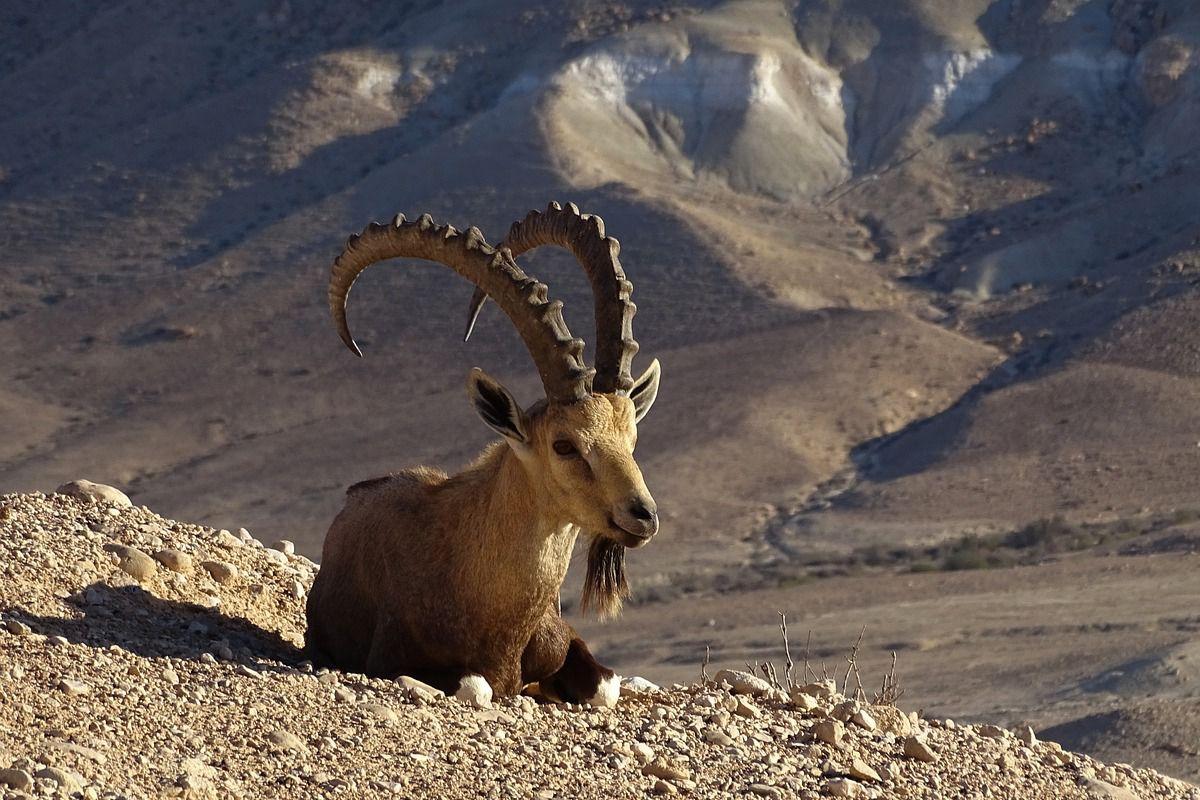
- Name: Nubian ibex
- Scientific name: Capra nubiana
- Conservation status:
The Nubian ibex is a species of wild goat native to northeastern and northern Africa, as well as the Middle East and Oman. There are about 1,200 individuals in the wild, and they are listed as vulnerable to extinction, primarily due to competition with livestock, habitat loss, and hunting pressure.
This ibex is particularly important in the Bible and is an important symbol in the neighboring country of Yemen, where it is seen as resilient and free.
4. Arabian wildcat
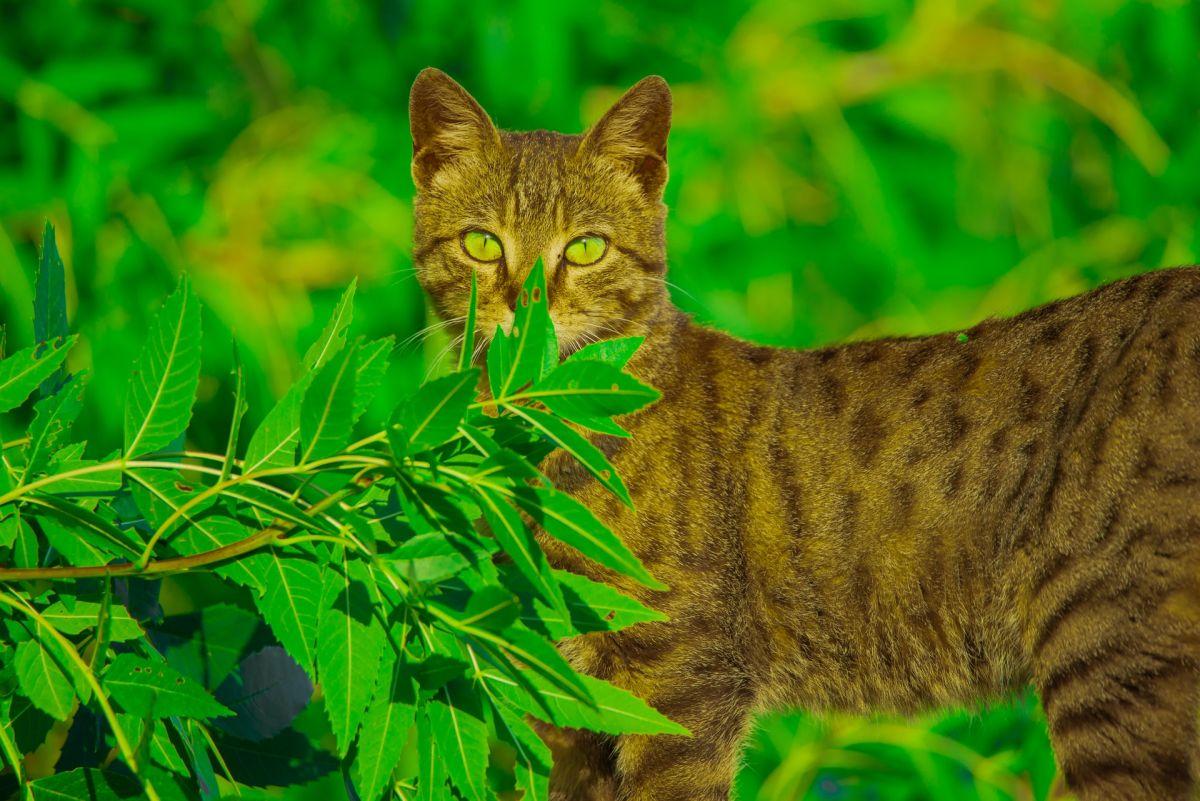
- Name: Arabian wildcat
- Scientific name: Felis lybica lybica
- Conservation status:
The Arabian wildcat, also known as Gordon’s wildcat, is a subspecies of the wildcat native to the Arabian Peninsula. It is about the same size as a domestic cat and has short, dense, and ash gray fur.
After being persecuted by the Bedouin people over the years, its habitat is now being degraded by agricultural expansion. Besides, hybridization between domestic and feral cats is a serious concern for this species, and some conservation programs have already been launched in zoos.
5. Striped hyena
- Name: Striped hyena
- Scientific name: Hyaena hyaena
- Conservation status:
The striped hyena is a species of hyena native to much of the northern half of Africa, the Middle East, and the Indian subcontinent. There are fewer than 10,000 mature individuals left in the wild, and they are all intensely persecuted and suffer from depletion of prey. In some countries, this hyena is seen as evil and treacherous, and its body parts are used for ritualistic purposes.
In Oman, you will find the striped hyena in the Jabal Samhan Nature Reserve, in the southwest.
6. Blanford’s fox
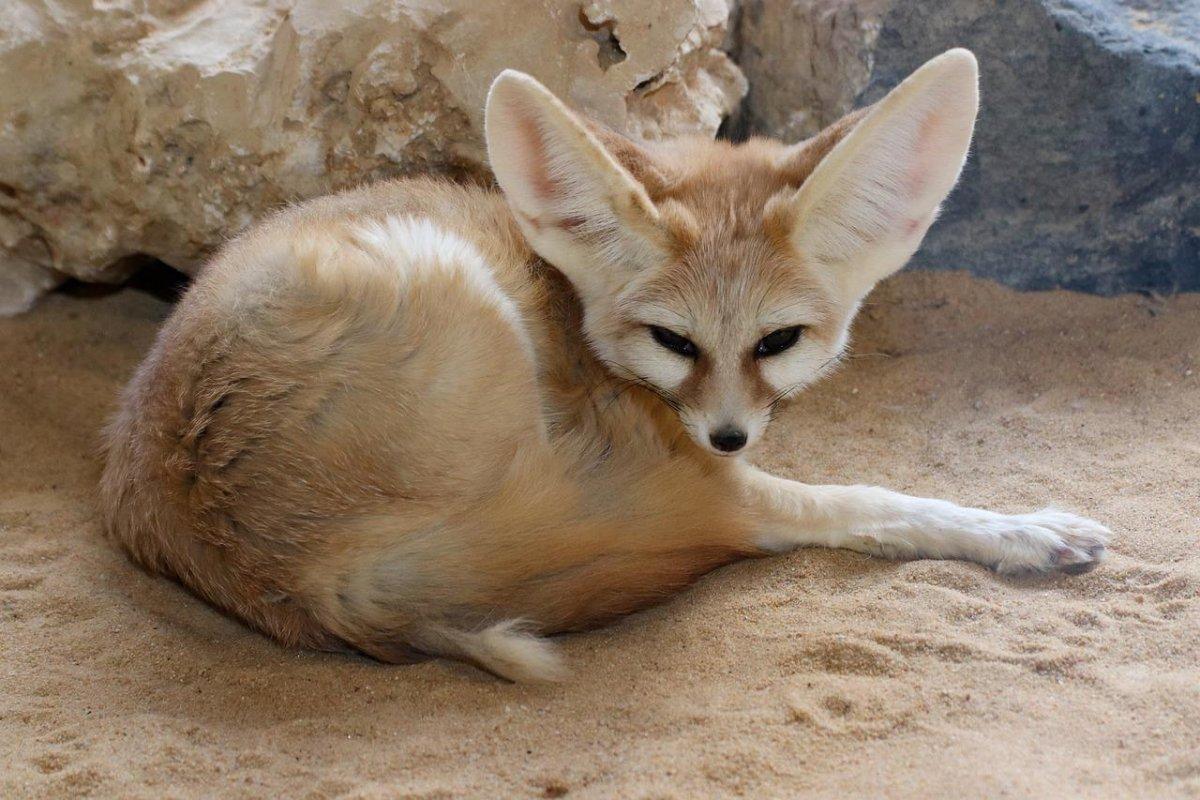
- Name: Blanford’s fox
- Scientific name: Vulpes cana
- Conservation status:
Blanford’s fox is a small species of canid native to Central Asia and the Middle East. It was first described by William Thomas Blanford in 1877, hence its name, and it lives in the forests of Oman, around the border with Yemen, at altitudes of about 1,200 m / 3,937 ft.
This fox is protected in countries such as Oman, Yemen, and Israel, but is still hunted for its fur and accidentally poisoned.
7. Caracal
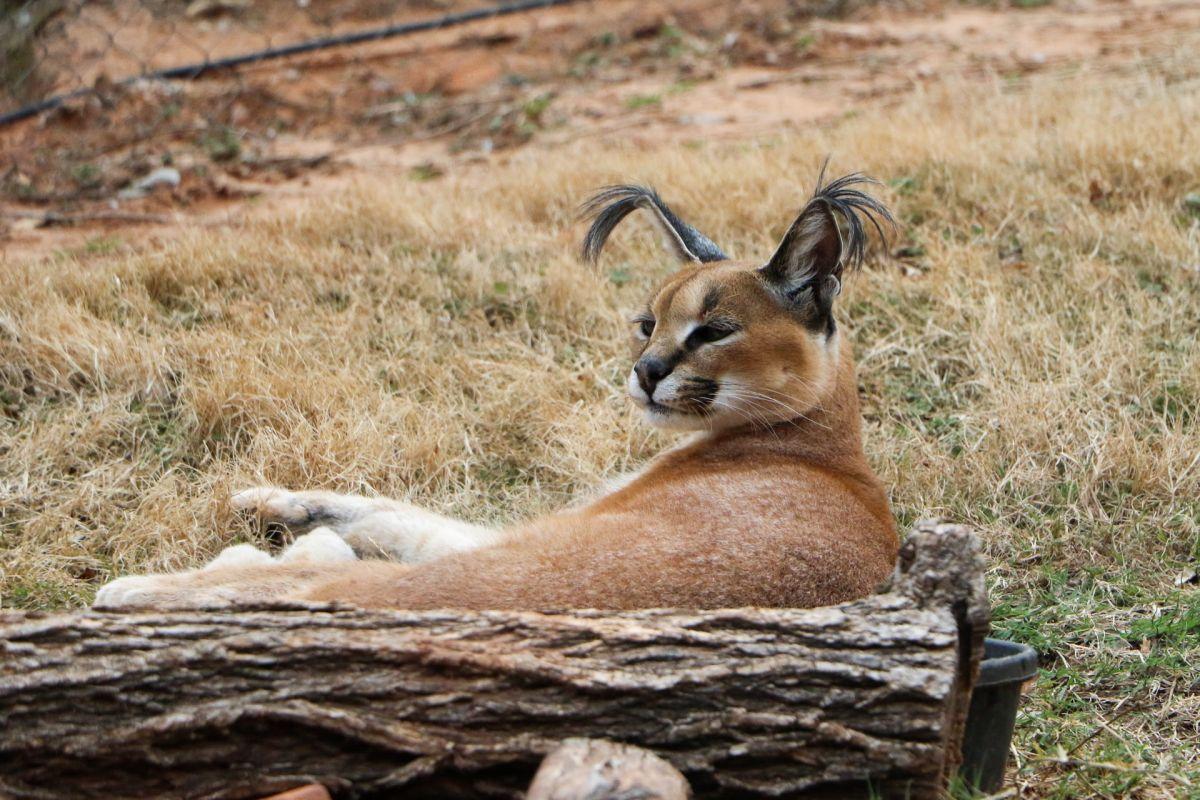
- Name: Caracal
- Scientific name: Caracal caracal
- Conservation status:
The caracal is a medium-sized species of wild cat native to the Middle East, Africa, the Indian subcontinent, and Central Asia. It is solitary and nocturnal and is a great predator, which feeds on small mammals, rodents, and birds. It is characterized by its slender, strong body and its leaping prowess, reaching more than 3 m / 10 ft above the ground and being able to catch birds in midair.
In Oman, it can be found in the Arabian Oryx Sanctuary, originally created for the oryx.
8. Mountain gazelle
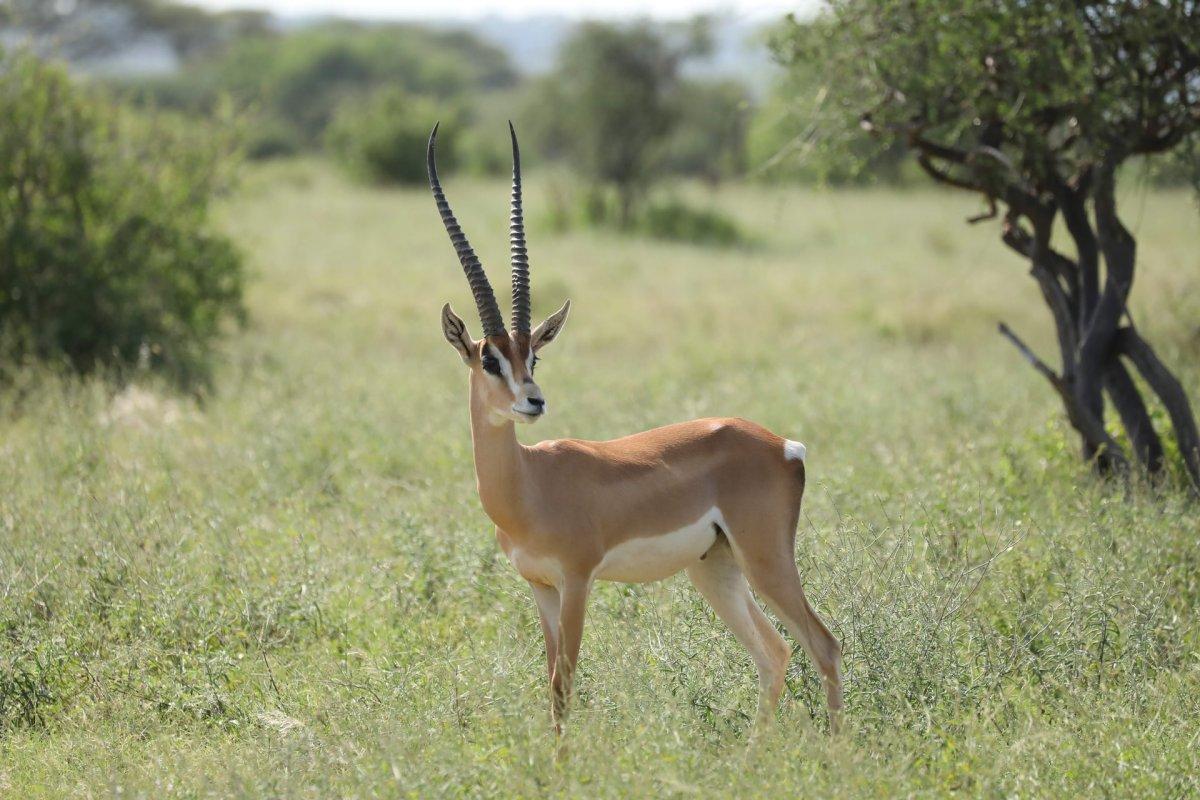
- Name: Mountain gazelle
- Scientific name: Gazella gazella
- Conservation status:
The mountain gazelle, also known as the Palestine mountain gazelle, is a species of gazelle widely distributed throughout the Middle East and the Arabian Peninsula. However, this species’ range is very fragmented, and its populations are uneven.
There are fewer than 3,000 mountain gazelles in their natural range, and they are on a declining trend. They have been hunted for decades, are still being poached for their horns, meat, and skin, and suffer from road accidents and habitat fragmentation, and loss.
9. Honey badger
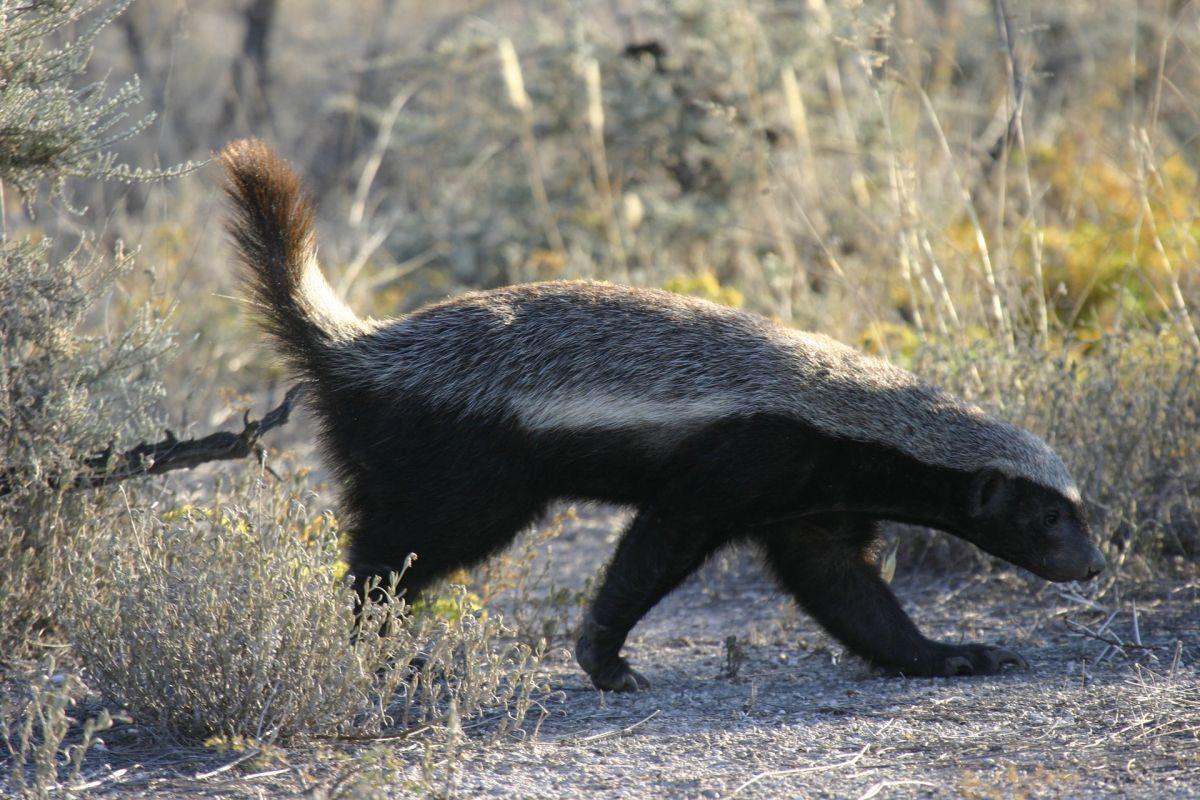
- Name: Honey badger
- Scientific name: Mellivora capensis
- Conservation status:
The honey badger, also known as the ratel, is a species of mammal with a wide range, from sub-Saharan Africa to the Indian subcontinent, and in the Arabian Peninsula. With that and its large numbers, it is considered of least concern.
This badger is particularly ferocious and has few natural predators thanks to its thick skin. Although it is classified as a carnivore, its diet is extremely varied, ranging from honey to tortoises, insects, rodents, birds, snakes, and eggs.
10. Egyptian vulture
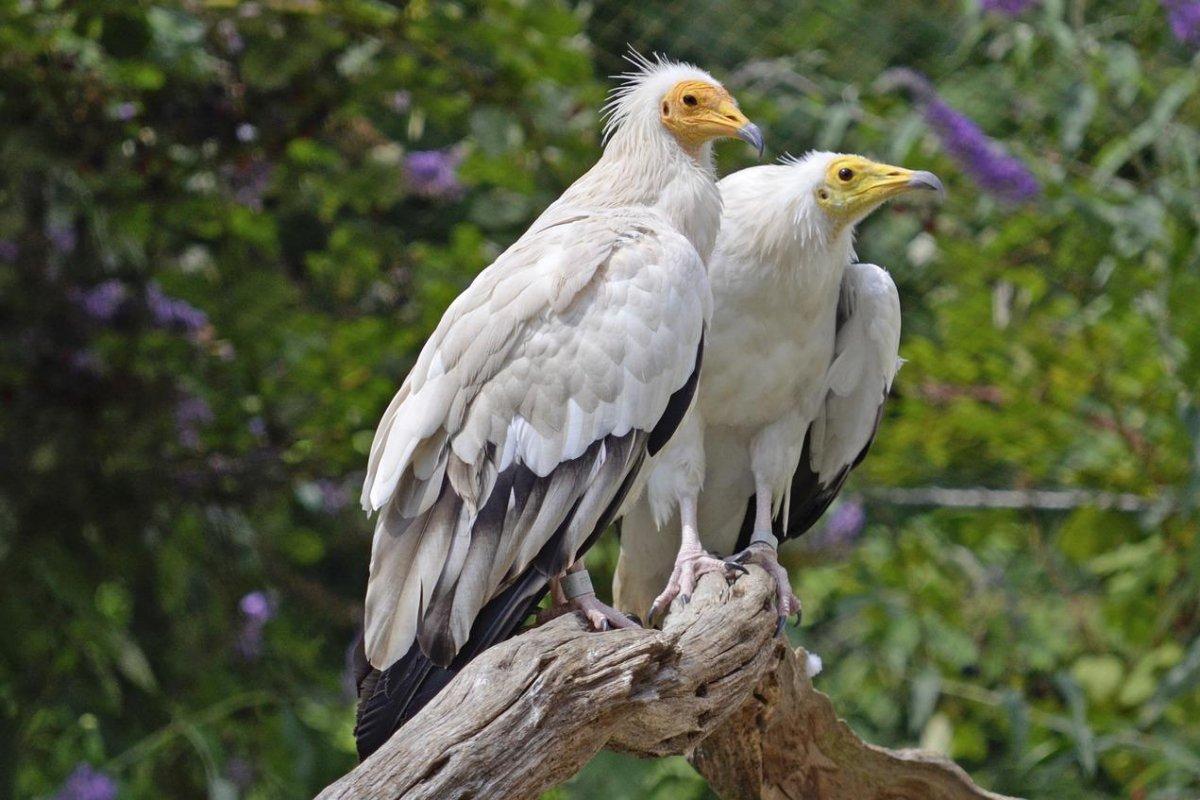
- Name: Egyptian vulture
- Scientific name: Neophron percnopterus
- Conservation status:
The Egyptian vulture, also known as the white scavenger vulture or the pharaoh’s chicken, is a species of Old World vulture native to the Arabian Peninsula in southwestern Europe, sub-Saharan Africa, and the Indian subcontinent, West Asia, and the Middle East.
It is a migratory bird that takes refuge in the mountains of Oman. This vulture is an important part of the culture in general, is depicted in its own hieroglyph, and is mentioned in the Bible.
11. Golden eagle

- Name: Golden eagle
- Scientific name: Aquila chrysaetos
- Conservation status:
Similar to the Egyptian vulture, the golden eagle hides in the mountains of Oman, where the desert condition and the rocky areas are perfect for both itself and its search for prey.
This eagle can actually be found throughout the entirety of the Northern Hemisphere, and it is one of the most widespread species of bird of prey. It is worth noting that the golden eagle has been one of the most widely used birds in falconry over the centuries.
12. Omani owl
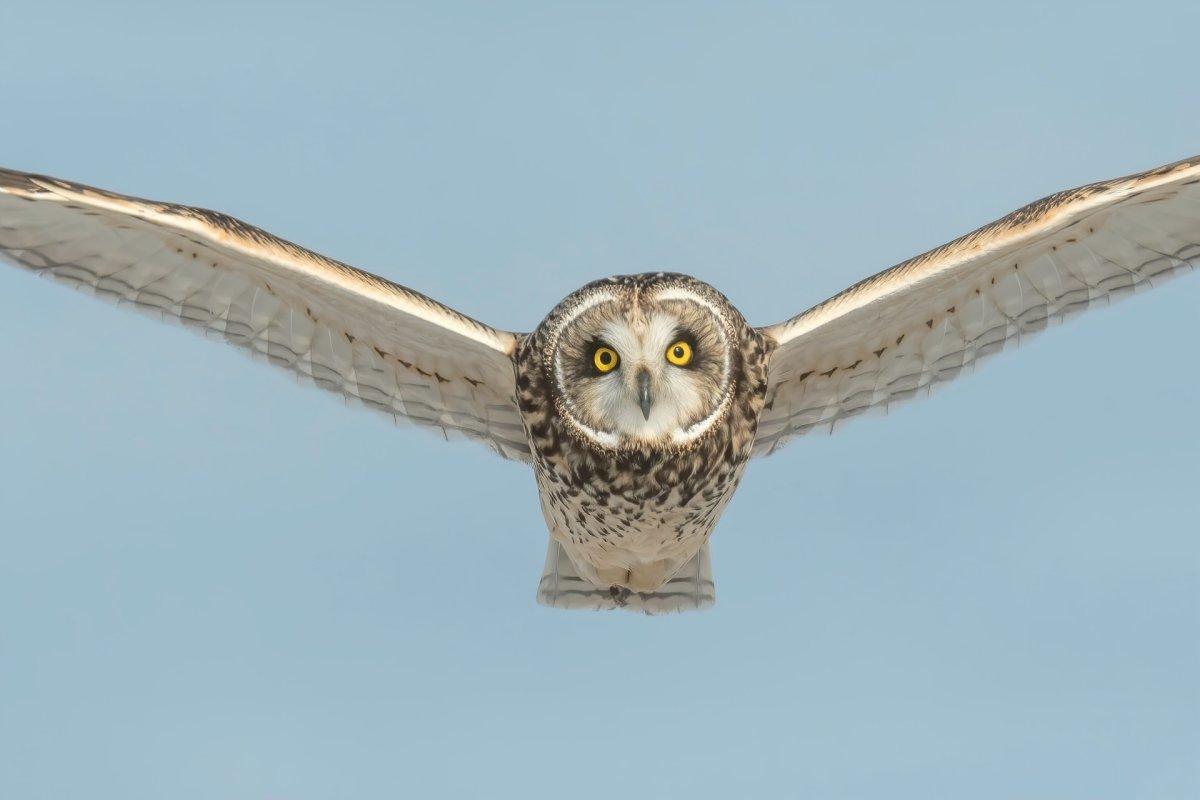
- Name: Omani owl
- Scientific name: Strix butleri
- Conservation status:
The Omani owl is the only bird endemic to Oman, and it was only discovered in 2013. It has only been observed in high rocky cliffs, and its numbers have not been assessed yet, but it is closely related to the desert owl.
As a matter of fact, the first specimen of this species was described in 1878, but it is only until recent years that this species was declared different from similar, sympatric owls.
13. Puff adder
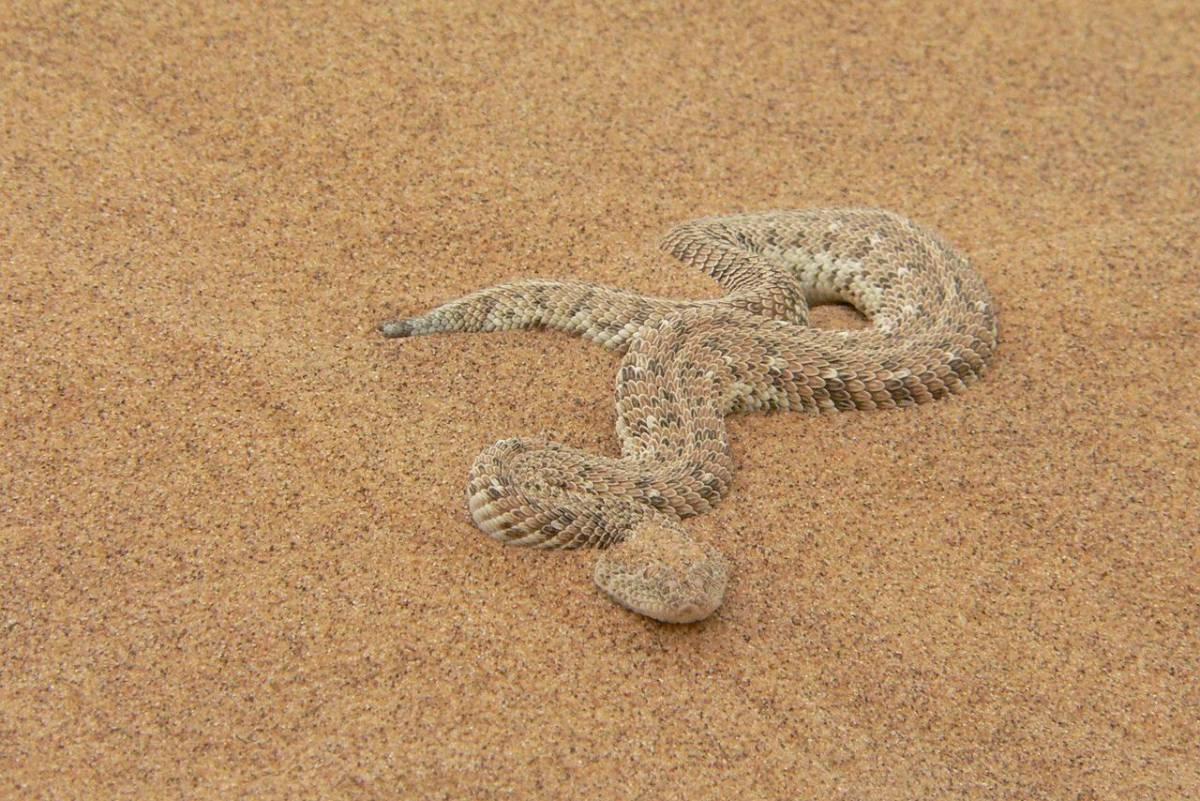
- Name: Puff adder
- Scientific name: Bitis arietans
- Conservation status:
The puff adder is a species of venomous viper native to the savannas and grasslands of sub-Saharan Africa, Morocco, and the southern parts of the Arabian Peninsula, including southwestern Oman.
This adder is one of the few dangerous snakes in Oman, alongside the horned viper and some cobras. While venomous and quick, it highly relies on camouflage to stay hidden and ambush its prey.
14. Spinner dolphin
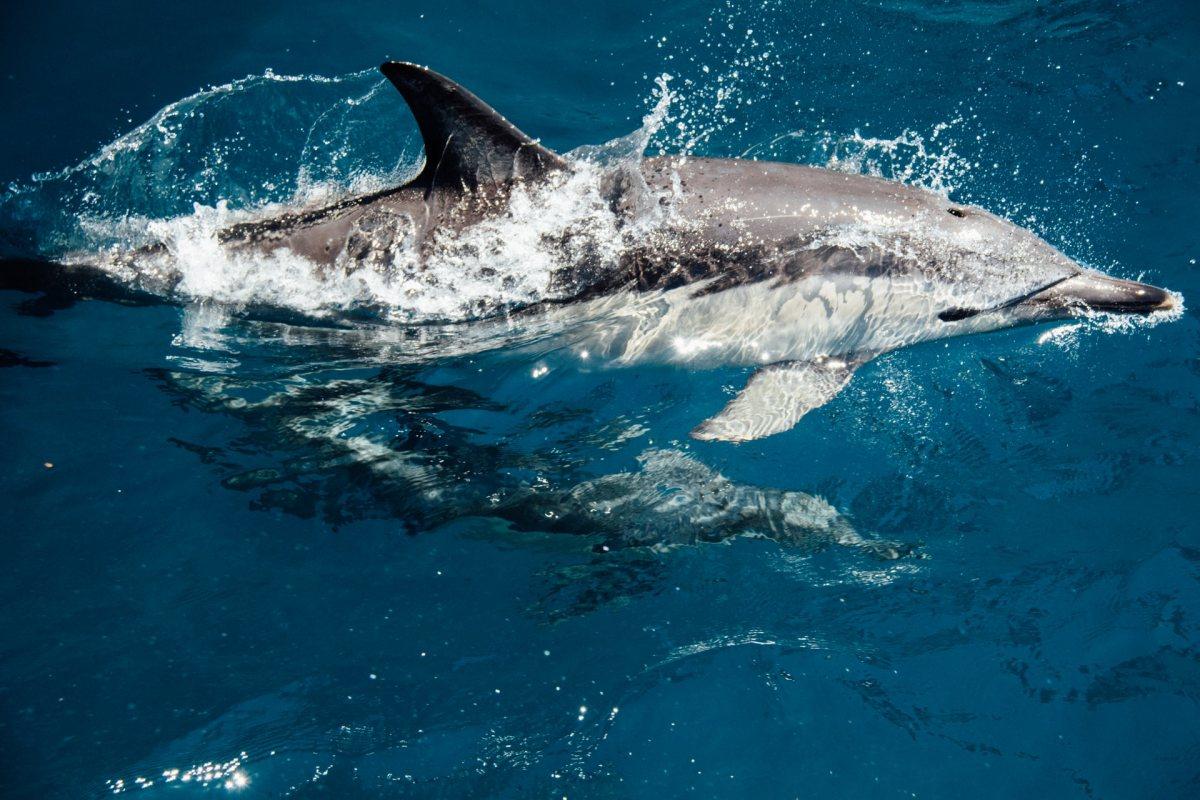
- Name: Spinner dolphin
- Scientific name: Stenella longirostris
- Conservation status:
The spinner dolphin is a small species of dolphin known for its aerial prowess. It can be found off the coast of Muscat in southern Oman, as well as in all subtropical and tropical waters of the world.
This dolphin usually spends the day resting in shallow waters, before diving into deeper areas to find its food, primarily fish, shrimps, and squid. It uses vocalizations to communicate with other individuals.
15. Sperm whale
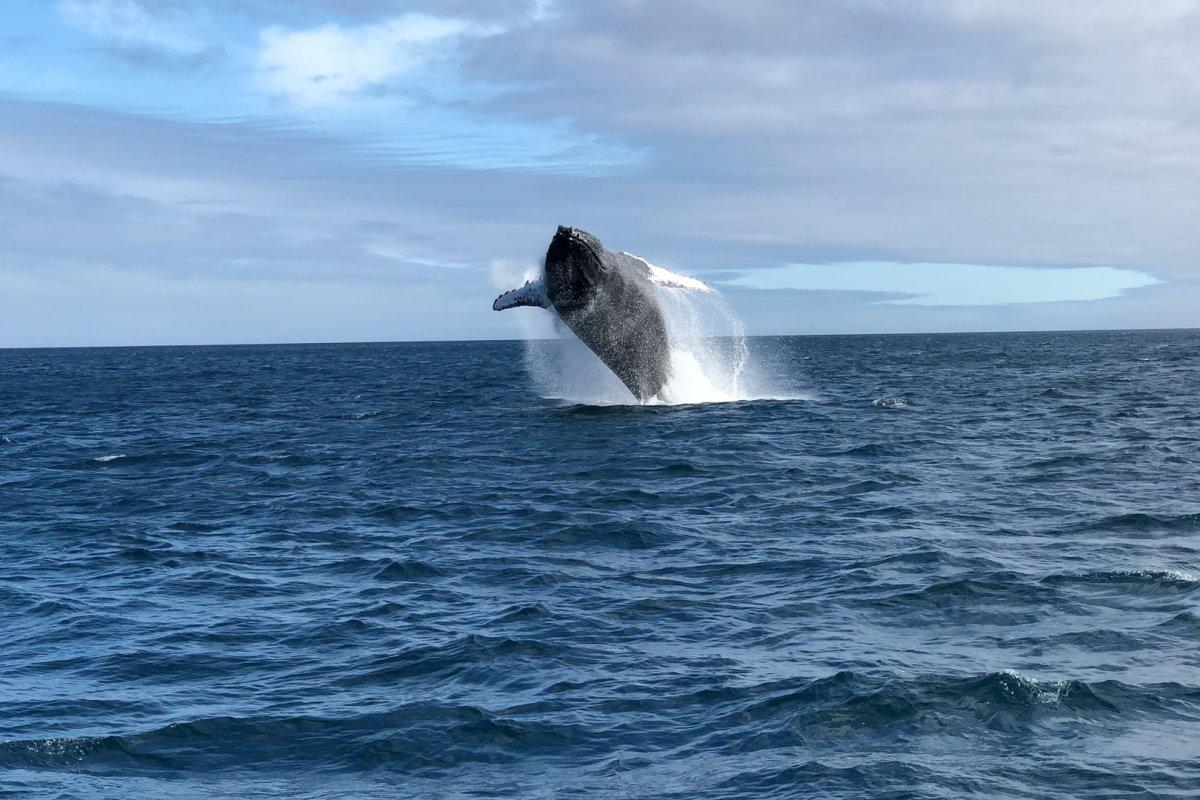
- Name: Sperm whale
- Scientific name: Physeter macrocephalus
- Conservation status:
The sperm whale, also known as the cachalot, is the largest toothed whale as well as the largest toothed predator in the world. It dives incredibly deep, has a humongous brain (12 times larger than a human’s!), and has a very large head which represents about a third of its body length.
This mammal can also be found off of Muscat, and it has a worldwide distribution, although it usually avoids icy waters and areas over 1,000 m / 3,300 ft deep.
16. Goitered gazelle
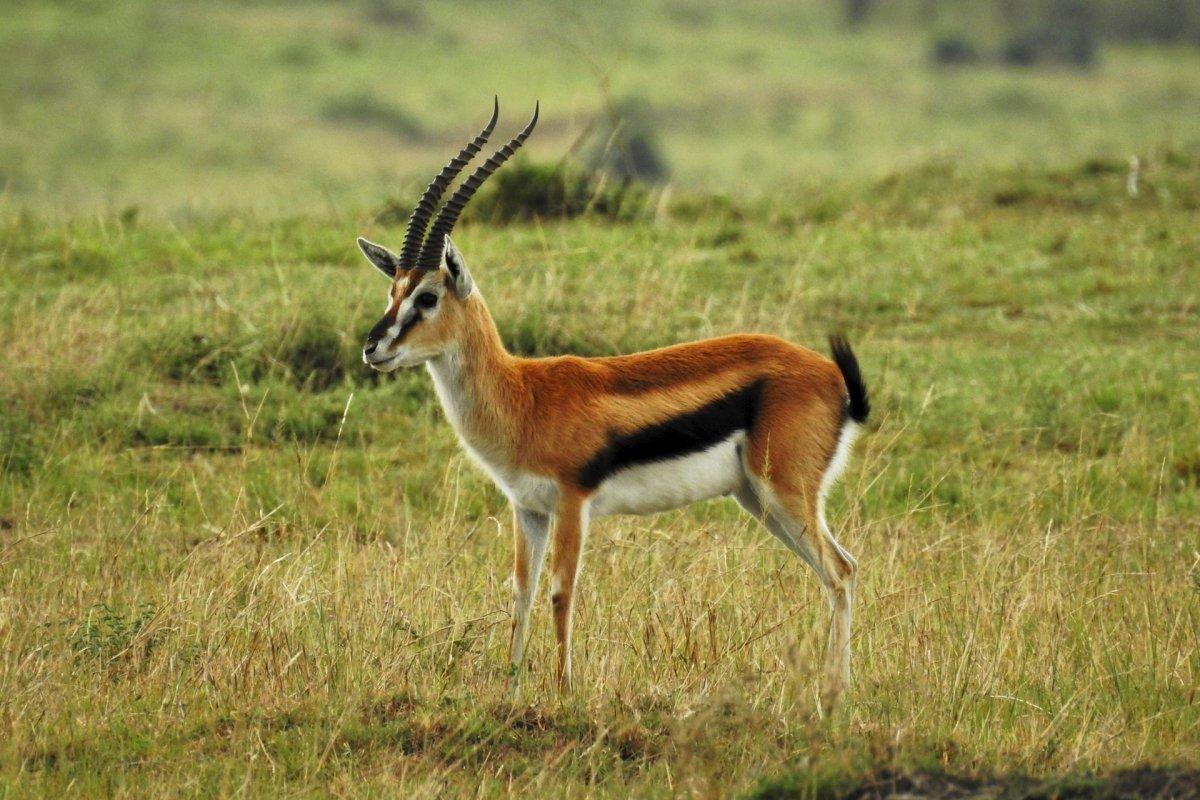
- Name: Goitered gazelle
- Scientific name: Gazella subgutturosa
- Conservation status:
The goitered gazelle, also known as the sandy gazelle or the black-tailed gazelle, is a species of gazelle native to Central and West Asia, and present in Oman’s Arabian Oryx Sanctuary. It inhabits sands and gravel plains, and usually gathers in large herds, although it is now threatened and its numbers are declining.
This gazelle was slaughtered in rituals during ancient times and was captured with desert kites as far back as 6,000 years ago.
—
So there you have them, these were my 16 animals from wild Oman. I hope you enjoyed this list and that you learned something new today.
In case you want to learn more about animals in the country, feel free to keep reading, as I still have lots of things to tell you about:
Endangered Animals of Oman
This is definitely the saddest part of the list, but it is very important to raise awareness. Because of this, let’s go through the list of endangered animals in Oman.
Here are the animals in danger of extinction in Oman.
- None
- Oceanic whitetip shark
- Green sawfish
- Dwarf gulper shark
- Bengal guitarfish
- Hawksbill turtle
- and 12 more…
- Lappet-faced vulture
- Gray reef shark
- Steppe eagle
- Whale shark
- Egyptian vulture
- and 35 more…
To see the full list of endangered species in Oman, head over to the International Union for Conservation of Nature’s Red List.
What is the National Animal of Oman?
The national animal of Oman is the Arabian oryx.
The Arabian oryx, also known as the white oryx, is a medium-sized species of antelope with long, straight horns, and one of the major emblems of the Arabian Peninsula, to which it is native. After becoming extinct in the wild during the 1970s, it has recovered much of its former range but is still listed as vulnerable to extinction.
Outside of Oman, this animal is the national emblem of Jordan, the United Arab Emirates, Qatar, and Bahrain. It is most likely the real-life explanation for the myth of the unicorn.
How Many Animals Native to Oman?
What is the diversity of native animals in Oman?
Let’s look at the total number of species of Chordata (mammals, birds, fishes, and reptiles).
Total number of animal species in Oman: 1,795 (5,029 in total in West and Central Asia)
More About Animals in the World!
Loved these Oman animal facts? Want to see what animals live in other countries?
Then check out these posts:
Or click here to see ALL the facts up on the blog! Spoiler alert: there’s A LOT of them.
Share the knowledge! Click on the buttons below to share information about these famous animals in Oman with your friends, and help them learn more about the world 🙂
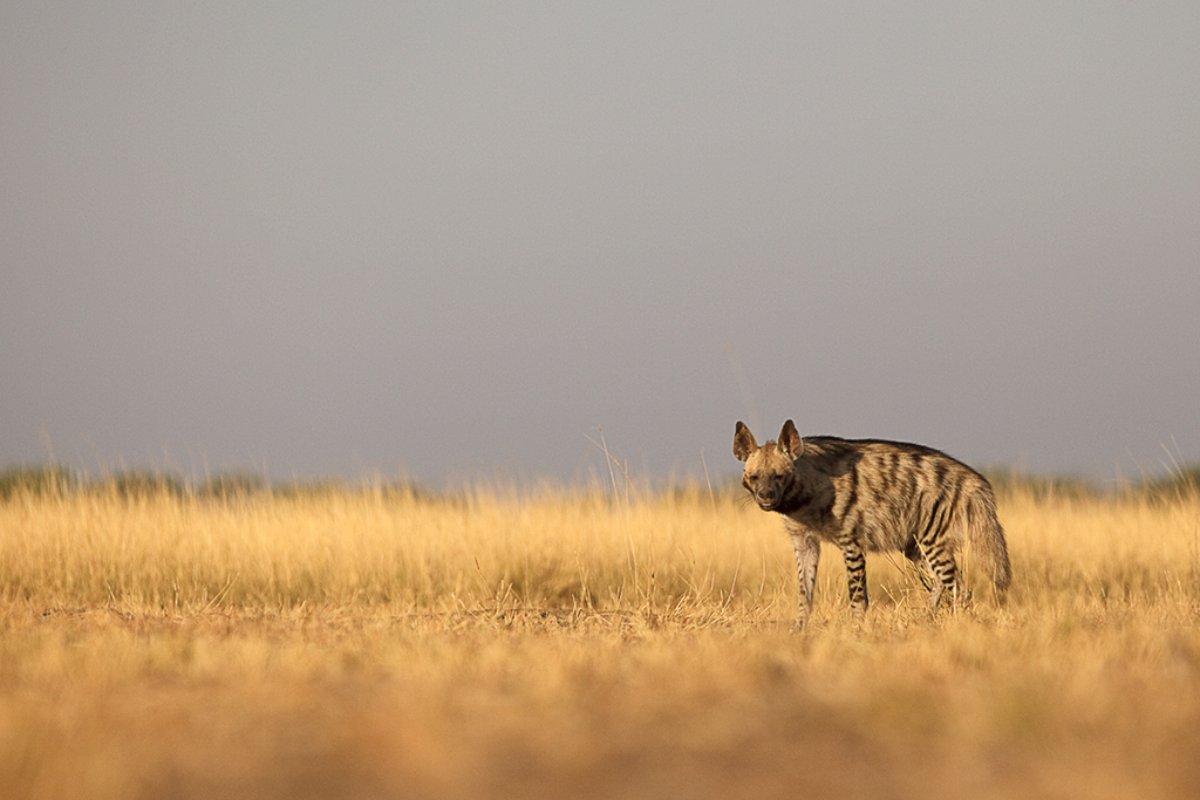

![21 Wild Animals in Switzerland [Wildlife in Switzerland]](https://www.kevmrc.com/wp-content/uploads/2022/11/21-wild-animals-in-switzerland.jpg)
![19 Wild Animals in Israel [Wildlife in Israel]](https://www.kevmrc.com/wp-content/uploads/2022/06/19-wild-animals-in-israel.jpg)
![18 Wild Animals in Georgia [Wildlife in Georgia]](https://www.kevmrc.com/wp-content/uploads/2022/06/18-wild-animals-in-georgia.jpg)